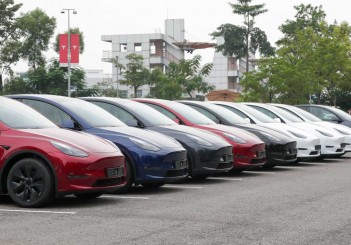SHAH ALAM: UMW Toyota Motor Sdn Bhd expects to maintain combined sales of the Toyota and Lexus models at 100,000 units for 2015, driven by the launch of new models this year.
According to Malaysian Automotive Association statistics, the company sold 102,035 and 1,601 Toyota and Lexus units respectively in 2014.
UMW Toyota Motor president Datuk Ismet Suki expects Toyota to maintain its 15% share of the total industry volume this year, with the Vios continuing to be the best seller.
“It’s what we’re aiming for this year as it’s a competitive market,” he said at a press conference following the unveiling ceremony of the completely-knocked-down (CKD) Camry Hybrid production line at its factory.
Ismet said the company invested RM180mil for the production line for 7,000 units of the Camry (both petrol and hybrid variants) this year.
The factory has an annual production capacity of 75,700, which can be ramped up to 90,000 with overtime shifts.
Ismet said UMW Toyota Motor was targeting to sell up to 900 Camry models a month. It would be launching the CKD Camry Hybrid next month.
Ismet declined to reveal the final price of the Camry Hybrid, only to say that it would cost “below RM200,000.”
Under the revised National Automotive Policy that was announced last year, car companies that assembled hybrid or electric vehicles locally would be granted tax exemptions - meaning that they would be cheaper than fully imported ones.
The exemption for hybrids, however, expires at the end of this year.
“Without the tax exemption, the impact would be greater.
“However, we are working closely with the Government and hope that they will understand (the situation) once the exemption expires,” Ismet said.
He said car prices should drop marginally following the implementation of the goods and services tax next month.
“If there are any cost savings, we will pass them on to the consumer.
“But it also depends on market forces. We can’t raise prices if demand is not there.”










